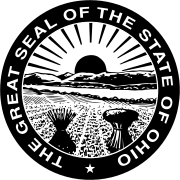The King of Spin. How Dennis Kucinich remade himself
From The Scene, December 5, 2007 written by Denise Grollmus
The link is here
www.teachingcleveland.org
{gallery}the_seventies/kucinich{/gallery}
The King of Spin. How Dennis Kucinich remade himself
From The Scene, December 5, 2007 written by Denise Grollmus
The link is here
The link is here
Tomorrow porgram the day after the recall election. Show date: August 14, 1978
From Wikipedia
|
|
This article needs additional citations for verification. (November 2007) |
| Elections in Ohio |
|---|
 |
The 1978 Cleveland Recall Election determined whether or not Cleveland, Ohio‘s 53rd mayor, Dennis Kucinich would be removed from office. It was the first mayoral recall election in the city’s history.
Contents[hide] |
On Good Friday 1978, Kucinich fired his police chief of only four months, Richard Hongisto on live local television. Capitalizing on the issue, Kucinich’s opponents began circulating petitions for the mayor’s recall. Despite his consistent support for populism and the workingmen’s concerns, some felt that his bombastic nature and inability to compromise, as well as the youth and inexperience of some of his appointees, made him incapable of governing a struggling city.
Initially, the drive began slowly. Then on April 10, Cleveland City Council voted to investigate a “midnight raid” by administration officials on the office of economic directorJoseph Furber. Kucinich angrily called council “a group of lunatics” and “a bunch of buffoons.” He also stated that “it’s hard to believe that so many people can be so stupid,” and asserted that “if they’re not stupid then they are crooked, or maybe both.” This led to council members joining the recall drive. Realizing his mistake, Kucinich offered an apology. However, on the same day, Bob Weissman assailed council and business leaders in a speech to the Harvard Business Club.
In the summer of 1978, Kucinich set up special police patrols, in response to high crime in public housing projects. Police refused to obey the order. The administration then suspended thirteen officers and ultimately touched off a two-day police strike. It was another first in the city’s history.
Additionally, Kucinich vowed to veto a plan to lease a city-owned dock to the Cleveland-Cuyahoga County Port Authority, which wanted the property so that it and Republic Steel could build a new ore dock. At a July 10 council meeting, the mayor spoke against the lease and started to note the contrast between the actions of council on the matter and its cautious pace on Kucinich’s recommendation to hire a computer company.
“Stick to the issue,” ordered Council President George L. Forbes. Kucinich responded, “Mr. Chairman, I determine the issue.” “Not in this chamber,” Forbes retorted. Kucinich still persisted: “Tactfully submit that you will permit me to continue my remarks.” “Just one moment,” Forbes said, “I chair these meetings…” Kucinich interrupted, “You have no ability, Mr. Chairman to censor my remarks!”
After using three of his four minutes at the podium to argue with Forbes, Kucinich continued to spend his last minute comparing the issue with the computer contract. In response, Forbes declared the mayor out of order and shut off his microphone. Infuriated, Kucinich continued to protest: “Mr. Chairman, this is a corrupt deal! I will not be silenced, Mr. Chairman!” After a statement by councilman Lonnie Burten, Kucinich stormed out of Cleveland City Hall followed by 15 aides. The action brought applause from the steelworkers union, who turned out in support of the ore dock. “Keep on going,” one of them shouted. Forbes attempted to restore order. “Let’s be quiet while they walk out.”
Council Majority Leader Basil Russo, who had begun speaking before the mayor left, also pushed for order. “Mr. Chairman, that is wrong. We cannot allow the administration to totally break down communications in city government.” He continued, “We don’t want him to leave, I think he’s hurting the interests of all the residents of the city of Cleveland.” Although council approved the lease afterward, Republic Steel decided to leave the city and build its dock in Lorain.
If anything, these incidents fueled the recall drive even more. At first, recall petitions were some 3,355 signatures short of the required 37,552 when first submitted in May. Proponents of the anti-Kucinich movement had 20 more days to make up the difference and on June 1, an additional 5,321 signatures were obtained.
Although Kucinich challenged the validity of the signatures, Common Pleas Judge John Angelotta ruled against him. The Court of Appeals and the Ohio Supreme Court upheld Angelotta’s ruling and a recall election date was set for August 13, the first Sunday election in local history. The mayor’s response was “Bring on the recall!”
The Plain Dealer, The Cleveland Press, The Cleveland Call and Post, the Republican and Democratic parties, the AFL-CIO and 24 of the 33 council members urged the mayor’s recall. Kucinich fought back withtelevision commercials showing business leaders cutting up a cake shaped like Cleveland City Hall.
An August 1 poll devised for The Cleveland Press by Urban Reports Corp. and Cleveland State University showed the following results:
| Positions | Caucasian voters | African American voters |
|---|---|---|
| For recall | 29.8% | 38.1% |
| Against recall | 50.3% | 34.4% |
| Undecided | 19.9% | 27.5% |
The outcome of this survey showed the possibility of a Kucinich victory. These poll results became truth when the day of the recall election came on August 13. At first, the outcome of the election was uncertain. After a recount, the results were finally in. 60,014 votes were cast for recall and 60,250 against. Kucinich was able to retain his position by only 236 votes (a margin of less than 0.2 percent). He later thanked “God and the people of Cleveland for ignoring [his] imperfections and giving [his] administration another chance.”
|
|
This article cites its sources but does not provide page references. (September 2010) |